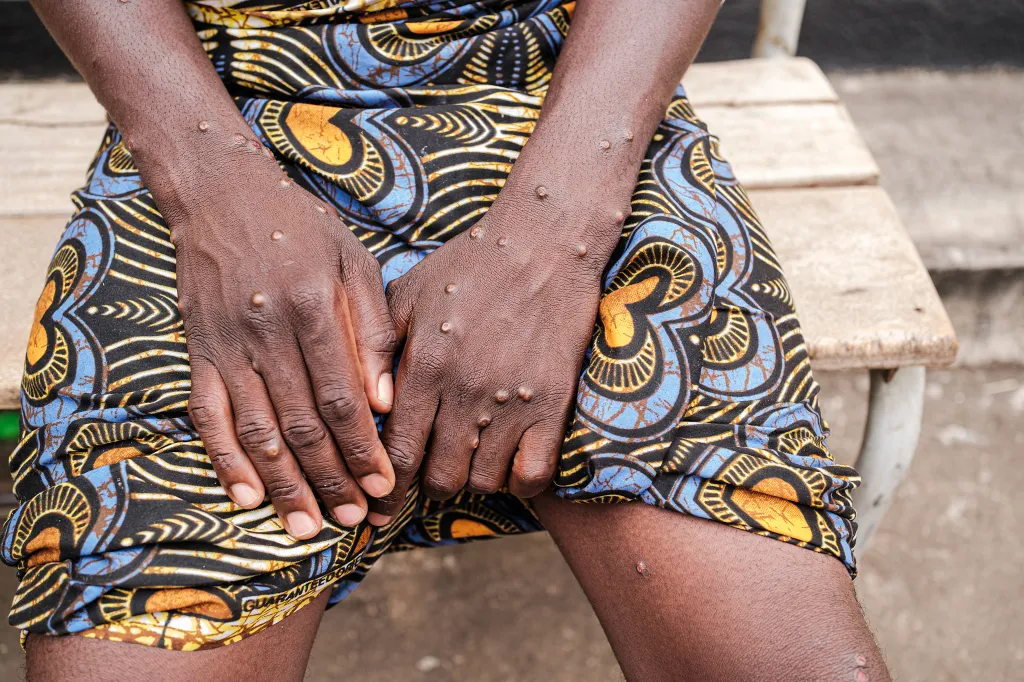This study investigates potential differences in psychological health (i.e. life satisfaction, anticipated future life satisfaction, distress), social well-being, and experiences of victimisation among adult offspring born to lesbian parents when compared with participants from a nationally representative sample surveyed in the same historical context of renewed anti-LGBTQ+ oppression. The research involved 75 adult offspring (M = 30.93, SD = 0.93; sex assigned at birth: 39 female and 36 male; gender identity: 73 cisgender and 2 gender nonbinary; sexual orientation: 51 heterosexual and 24 sexual minority) of the first generation conceived through donor insemination by lesbian parents. These offspring were matched with 75 participants of a U.S. probability sample based on several factors, including age, race/ethnicity, education, sex assigned at birth, gender identity, and sexual orientation. The comparison group is presumed to have been raised by heterosexual parents. After applying Bonferroni’s correction to minimise the risk of Type I errors resulting from multiple comparisons, no significant differences emerged in the study variables between the two samples. Despite a climate of renewed anti-LGBTQ+ oppression, adult offspring of lesbian parents were doing well, possibly due to unique socialisation processes in childhood when their parents taught them to be resilient even in the face of socio-environmental challenges.
The first generation of children in the United States (U.S.) conceived through assisted reproductive technologies (ARTs) in the 1980s by lesbian parents grew up in a society that stigmatised their families. By the time these offspring reached emerging adulthood, civil and reproductive rights had expanded for individuals with minoritized gender and sexual identities (Flores, 2021). Recently, however, there has been a reactionary backlash in the U.S. regarding Lesbian, Gay, Bisexual, Transgender, and Queer+ (LGBTQ+) rights (Kumar et al., 2023). This backlash occurred as this first generation reached established adulthood, conceptualised by Mehta et al. (2020) as a time of maximum demands from family and work when adults are ages 30–45. However, little is known about the well-being of ART-conceived established adults from lesbian parents who have witnessed this renewed offensive against their families.
Research on the well-being of offspring of lesbian parents began in the 1980s when mothers came out as lesbian and often lost custody of their children when divorcing their husbands (Goldberg, 2010; Tasker & Lavender-Stott, 2020). These judicial rulings were based purportedly on the ‘best interest of the child’, with the assumption that it would hurt children to be reared by parents who did not identify as heterosexual. To provide data, researchers began to study these children by comparing their development, including mental health, behaviour problems, and peer relations, with that of children raised by heterosexual parents, and the results revealed that the former offspring were doing well, or in some cases even better, than the latter (e.g. Golombok et al., 1983; Gottman & Sussman, 1990; Hotveld & Mandel, 1982; Tasker & Golombok, 1995, 1997).
In the mid-1980s, the growth of ARTs enabled a new route to parenthood for lesbian women, which led to what became known as ‘the lesbian baby boom’ (Patterson, 1995). Research on the well-being of offspring born through donor insemination and raised from birth in families with lesbian parents showed no significant differences in the children’s psychological adjustment compared to (a) children born to heterosexual parents through donor insemination (e.g. Brewaeys et al., 1997; Golombok et al., 1997), (b) children born to heterosexual parents through unassisted conception (e.g. Van Rijn van Gelderen et al., 2015), or (c) demographically matched individuals from national representative samples (e.g. Bos et al., 2016; Golombok et al., 2003). The results were similar regardless of their developmental stage (childhood, adolescence, and emerging adulthood) and highlighted the resilience of these offspring (e.g. Gartrell & Bos, 2010; Gartrell et al., 2018; MacCallum & Golombok, 2004; Titlestad & Pooley, 2014).
Meanwhile, there was a paradigm shift in the design of studies on children born and reared in lesbian-parent families. The method of comparing children of heterosexual parents with children of lesbian parents was criticised because of the underlying defensive approach to proving the ‘normalness’ of these latter families (e.g. Farr et al., 2017, 2022; Goldberg et al., 2023; Prendergast & MacPhee, 2018). As a result, studies on lesbian-parent families were increasingly conducted without a comparison group; rather, they focused on the interrelationships of the unique experiences, challenges, and resources of the offspring in these families (e.g. Bos et al., 2021; Goldberg et al., 2023).
This paradigm shift aligned with the social-constructionist perspective, which highlights that children of LGB parents and those of heterosexual parents have different social experiences, and these differences should be interpreted in the context of a heteronormative society (Goldberg, 2007; Goldberg et al., 2023; Stacey & Biblarz, 2001). From this perspective, some studies have investigated the experiences of adults, both emerging and established, who have LGB parents. These studies revealed that adult children who grew up with LGB parents often feel affronted by social heterosexism and feel that they have to protect their parents and the LGB community (e.g. Clarke & Demetriou, 2016; Goldberg, 2007; Goldberg et al., 2023). As a result, some acted as advocates for, and defenders of, their parents and strove to represent themselves as successful and psychologically healthy offspring of LGB parents. These children also mentioned that when they faced difficulties or had experiences that differed from the norm, it was because of the heteronormative and cisgender-normative society (Clarke & Demetriou, 2016; Goldberg, 2007; Goldberg et al., 2023).
In recent years, several U.S. states such as Florida, Georgia, Texas, Arizona, and Wisconsin have introduced and passed anti-LGBTQ+ laws and policies (e.g. Goldberg, 2024; Sosin, 2022; Strauss, 2022). Given the current historical context in the U.S., characterised by a reactionary backlash targeting LGBTQ+ communities, it is once again important to focus on the well-being of offspring of parents with minoritized sexual identities by comparing them with the general heterosexual public. As Bronfenbrenner emphasised in his ecological framework, processes in the microsystem, such as interactions between parents and children, and macrosystem, such as political climate and state laws, play an essential role in individuals’ development (Bronfenbrenner, 1986a, 1986b). Bronfenbrenner also described a ‘chronosystem’ that refers to all changes that individuals have experienced during their lifetime (Bronfenbrenner, 1995a, 1995b, 1999).
According to minority stress theory (Frost & Meyer, 2023; Meyer, 1995, 2003), individuals who identify as LGBTQ+ experience chronic social stress due to their marginalised position in society. Minority stress occurs when people belong to a stigmatised group, and this can be caused by distal stressors such as experiences of discrimination, as well as proximal stressors like internalisation of prejudicial attitudes, and sensitivity to rejection (Frost & Meyer, 2023; Meyer, 2003). LGBTQ+ people are also subject to structural stigma, which can take the form of discriminatory laws and prejudicial social attitudes towards LGBTQ+ individuals. Structural stigma can increase exposure to both distal and proximal minority stressors, leading to reduced well-being and poorer mental health outcomes (Hatzenbuehler, 2024). These structural conditions can impact LGBTQ+ parents such that living in a more structurally stigmatising context is related to poorer well-being (e.g. Perrin et al., 2019). Studies have found evidence that the recent reactionary backlash on LGBTQ+ issues in the U.S. affects the well-being of sexual and gender minorities (Brown & Keller, 2020; Gonzalez et al., 2020; Haas & Lannutti, 2024; Veldhuis et al., 2018).
Regardless of their own gender or sexual identities, offspring with LGBTQ+ parents face stigma associated with their parent’s identities (Diomede et al., 2024). Renewed anti-LGBTQ+ oppression, including targeted efforts to undermine non-discrimination laws by allowing employers and hospitals to refuse LGBTQ+ people equal treatment (ACLU, 2023), likely affect the entire family, including adult offspring of lesbian parents, even though most offspring currently identify as heterosexual and cisgender (Carone et al., 2024; Gartrell et al., 2019). There is evidence that painful experiences for parents have consequences for their adult offspring, and vice versa (Kaufman & Uhlenberg, 1998; Mehta et al., 2020).
According to family system theories, the family is a collection of relationships and behaviours (e.g. Miller et al., 2000; Minuchin, 1985). Feelings or behaviours experienced in one system, such as parents, can transfer to another system, such as adult children, because they still belong to the subsystem of the family in which they grew up. It is possible that adult offspring of parents with minoritized sexual identities are worried about their parents being targeted by renewed anti-LGBTQ+ oppression. This anxiety could negatively impact the psychological health of the offspring, in terms of less life satisfaction and more psychological distress (e.g. Hay et al., 2007; Kaufman & Uhlenberg, 1998; Mehta et al., 2020). The way people perceive the society in which they live can have an impact on their social well-being and their experiences with victimisation. This is particularly relevant during the transition to adulthood, when individuals develop their views on society and its institutions and assess whether the society is safe and trustworthy (Keyes, 1998; Sotardi et al., 2021).
Aim of the present study
While there is an extensive body of research on the mental health of the offspring of lesbian parents, there is no scientific information regarding their well-being in the current era of anti-LGBTQ+ oppression. Although previous studies showed no significant differences between the offspring of lesbian parents and participants from nationally representative samples, such comparisons did not take place during a rollback of civil liberties for LGBTQ+ people (Bos et al., 2016; Golombok et al., 2003). Therefore, it is important to study several aspects of their life, such as life satisfaction, psychological distress, social well-being, and victimisation, and compare them with participants who have similar demographics from a nationally representative sample.
The National Longitudinal Lesbian Family Study (NLLFS), which is the longest-running, prospective study of lesbian women who had children via donor insemination in the 1980s, gathered data in 2021–2022 on the lives of the adult offspring, who are now established adults in their early thirties. This 7th Wave of the NLLFS provides a unique opportunity to compare well-being (operationalised as psychological health and social well-being) in the adult NLLFS offspring with that of a nationally representative sample surveyed in the same historical context. Matched comparison data of cisgender and transgender participants were from the Transgender Population Health Survey (TransPop study), a probability sample of adults living in the U.S. surveyed in 2016–2018 (Krueger et al., 2020). It is likely that few of the matched TransPop participants grew up in a lesbian-parent family, since population-based studies such as the Behavioral Risk Factor Surveillance Survey found that only 1.82% of the people in the same age group as the NLLFS parents (mean age 66.6) identified as sexual minorities, and only a subset of those may have children (Twenge et al., 2023). Using the TransPop study participants, it was possible to match the NLLFS adult offspring on specific demographic variables (including gender identity and sexual orientation) and compare the two samples on psychological health, social well-being and experiences with victimisation, measured with the same instruments.
We hypothesise that the psychological health of the NLLFS adult offspring will be affected by the current context of renewed anti-LGBTQ+ oppression, and that consequently they will experience less current satisfaction with life, less anticipated future life satisfaction, and more psychological distress than the matched sample. We also investigated whether there are differences in social well-being between NLLFS adult offspring and the matched participants, particularly regarding their social integration and social actualisation (Keyes, 1998). Social integration refers to how someone evaluates their relationship with society, while social actualisation relates to someone’s perception of the potential and trajectory of a society (Keyes, 1998). We hypothesise that the NLLFS adult offspring will be less optimistic about these aspects of social well-being than the participants in the matched sample due to their past experiences with homophobic stigmatisation and the current anti-LGBTQ+ oppression. We also investigated the participants’ experiences with victimisation. We hypothesise that NLLFS offspring would report a higher number of victimisation experiences than the matched sample. Finally, we examined whether there are differences in psychological health, social well-being, and victimisation between individuals with a sexual minority identity and those who identify as heterosexual in both samples.
Method
Participants and procedure
Participants from the National Longitudinal Lesbian Family Study (NLLFS)
The NLLFS began to follow lesbian-identified women who were among the first generation to conceive children through donor insemination in the U.S (Gartrell, 2020). The lesbian women were recruited between 1986 and 1992 through announcements distributed in lesbian communities in Boston, Washington, D.C., and San Francisco. In the first wave of data collection (when the intended parents were inseminating or pregnant), a cohort of 84 families participated in the study. Their pregnancies resulted in 85 index offspring (including one set of twins). Parents were subsequently interviewed/surveyed when their children were 2, 5, 10, 17, 25, and 30–33 years old (Waves 2–7), and the offspring participated in the study beginning at age 10 (Gartrell, 2020).
The seventh wave of data collection occurred between March 2021 and November 2022. Seventy-five offspring (sex assigned at birth: 39 female and 36 male) between 30 and 33 years old (M = 30.93, SD = 0.92) completed an online survey that was protected with a unique password for each participant. Of these, 90.7% (n = 68) identified as White and 9.3% (n = 7) as African American/Black, Latina/o or Hispanic, or other/mixed (i.e. people of colour); all had attended college and were born in the U.S. Regarding their gender identity, all but two of the NLLFS offspring (97.3%; n = 73) were cisgender. In terms of sexual orientation, the majority of the NLLFS offspring identified as heterosexual (68.0%, n = 51), with 32.0% (n = 24) reporting a sexual minority orientation. At the time of the seventh wave of data collection, most offspring of the NLLFS lived independently from their parents, and the most frequent U.S. states of residence were California, Massachusetts, and New York. The demographic characteristics of the offspring are presented in . The Institutional Review Board at Sutter Health approved the study (SHIRB no. 20.070–2; IRBNet no. 348911–21).
Table 1. Demographic characteristics of the study participants.
Matched participants from the TransPop study
For the TransPop Study, Gallup, Inc. recruited a probability sample of adults living in the U.S. Interviewees were first asked about their sex assigned at birth, their gender identity, and several inclusion criteria (18 years or older, education above sixth grade, fluent in English). People who met the inclusion criteria completed a survey through an email link or a paper-and-pencil questionnaire. This procedure resulted in a population-based dataset with 1,436 participants (1,162 cisgender and 274 transgender people) (Krueger et al., 2020). This procedure was approved by the Institutional Review Boards of Gallup and the University of California, Los Angeles.
Data from the TransPop study, with its inclusion of cis- and transgender participants, were used to assemble a matched dataset for NLLFS offspring. Inclusion criteria were that TransPop participants must have been born in the U.S. and must have attended some college. Next, a case-control matching (random and without replacement) was carried out in SPSS (version 29), resulting in 75 participants. shows the demographic characteristics of the matched participants. The only significant difference between the two samples was that there were fewer people of colour in the NLLFS sample.
Measures
Three psychological health variables were investigated: current satisfaction with life, anticipated future life satisfaction, and psychological distress. In addition, perceived social well-being (social integration and social actualisation), and experienced victimisation were assessed.
Psychological health
The 5-item Satisfaction With Life Scale (Diener et al., 1985) (e.g. ‘If I could live my life over, I would change almost nothing’) was used to rate life satisfaction on a 7-point scale ranging from 1 (strongly disagree) to 7 (strongly agree). Cronbach’s alphas were .92 (NLLFS) and .91 (matched participants). A mean score was calculated for each participant, with higher scores indicating greater satisfaction with life.
A Cantril self-anchoring single item was used to assess participants’ anticipated future life satisfaction (Harter & Gurley, 2008), with scores ranging from 0 (worst possible) to 10 (best possible).
The Kessler-6 (Kessler et al., 2002) was used to measure psychological distress. Participants were asked how often they had felt certain emotions (e.g. ‘nervous’, ‘hopeless’) in the past 30 days. For the NLLFS, item scores ranged from 1 (none of the time) to 5 (all of the time), while for the matched sample item scores were reversed (from 1 = all of the time to 5 = none of the time). Cronbach’s alphas were .87 (NLLFS) and .86 (matched participants). Before calculating the mean for each participant, the scores for the matched participants were reverse-coded, so that higher scores for both samples represented more psychological distress.
Perceived social well-being
Two aspects of social well-being were assessed: social integration and social actualisation. The Social Integration subscale of the Social Well-being Scale (SWS; Keyes, 1998) consists of three items that evaluate how accepted an individual feels by a community (e.g. ‘I don’t feel I belong to anything I’d call a community’). The Social Actualization subscale from the SWS (Keyes, 1998) also consists of three items (e.g. ‘The world is becoming a better place for everyone’). The response options for both scales ranged from 1 (strongly disagree) to 6 (strongly agree). Before calculating the mean scores for each participant, the scores of one integration item and two actualisation items were reverse coded so that higher scores indicated higher levels of social integration and social actualisation, respectively. Cronbach’s alphas were .90 (NLLFS) and .77 (matched participants) for social integration and .71 (NLLFS) and .82 (matched participants) for social actualisation.
Experiences with victimization
Participants were asked six questions about the frequency of victimisation experienced since the age of 18 (e.g. ‘You were hit, beaten, physically attacked, or sexually assaulted’). Response options ranged from 1 (never) to 4 (three or more times) (Herek, 2009; Meyer et al., 2021). In line with other publications that used this measure, responses on each item were dichotomised into 0 (never) and 1 (once or more) (Meyer et al., 2021). After the dichotomisation a sum score was calculated for the six items.
Analysis
Using SPSS version 29, mean scores on the six studied variables (current satisfaction with life, anticipated future life satisfaction, psychological distress, social integration, social actualisation, and experienced victimisation) were calculated for NLLFS offspring and matched participants with race/ethnicity as a covariate. For calculating the mean scores and standard error for the matched participants, weighted data were used with complex sample analyses. T-tests were performed to compare the NLLFS group with their matched counterparts on these six variables. A Bonferroni correction was applied to minimise the risk of Type I errors resulting from multiple comparisons (Barnett et al., 2022; Lachlan & Spence, 2006). After the correction, a p-value of less than 0.008 was considered significant (0.05 divided by 6 comparisons).
We conducted several t-tests to compare individuals with a sexual minority identity and those who identify as heterosexual on the six studied variables. These t-tests were carried out separately for the NLLFS and the matched sample. For the matched sample, weighted data were used, and analyses were done with complex sample analyses. To reduce the risk of Type I errors, we also applied a Bonferroni correction for the comparison of sexual orientation in the NLLFS and the matched sample and considered a p-value of less than 0.008 as significant.
Results
A comparison of the NLLFS offspring and the matched participants
Mean scores, standard errors, 95% confidence intervals, and statistical information on the six studied variables for the NLLFS offspring and the matched participants are shown in . There were no significant differences in the levels of current or anticipated future life satisfaction and psychological distress of the NLLFS offspring when compared to the matched participants. There were no significant differences in levels of social integration and social actualisation (the p-value was .008, and our cut-off based on a Bonferroni correction was less than 0.008 to be considered significant) between the NLLFS offspring and the matched participants, nor in the frequency of victimisation experiences.
Table 2. Means and standard errors for psychological health, social well-being, and experiences with victimisation for NLLFS participants and matched participants.
Sexual orientation differences in the NLLFS offspring and the matched participants
shows the mean scores, standard errors, 95% confidence intervals, and statistical information on the six studied variables for the comparison between sexual minority and heterosexual participants separately for the NLLFS offspring and the matched participants.
Table 3. Means and standard errors for psychological health, social well-being, and experiences with victimisation for heterosexual and sexual minority participants, separately for the NLLFS and matched participants.
For the NLLFS offspring, participants who identified as sexual minorities reported lower levels of current and anticipated future life satisfaction compared to those who identified as heterosexual (see ). No significant differences were found between the two groups on other variables.
Among the matched participants, those who identified as sexual minorities reported higher levels of psychological distress than heterosexual people. The sexual minority participants in the matched sample also reported more experiences with victimisation compared to the heterosexual participants (see ).
Discussion
The present study focused on the psychological health and social well-being of established adult offspring born and raised by parents with minoritized sexual identities in the U.S. The study took place at a time when these offspring were witnessing the emergence of laws in many U.S. states that target people with minoritized sexual and gender identities, such as their parents. Data from the matched participants were collected during the same era of increased LGBTQ+ oppression. However, these participants were more likely reared by heterosexual, cisgender parents, based on national samples that found fewer than 2% of the participants in the same age group as the NLLFS parents identifying as sexual minorities (Twenge et al., 2023).
We hypothesised that the psychological health of the adult offspring of lesbian-parent families would be negatively affected by the current context of renewed anti-LGBTQ+ oppression and that, consequently, they would have poorer psychological health than the matched sample. This hypothesis was in line with studies finding that the recently introduced anti-LGBTQ+ laws in the U.S. created concerns in families consisting of LGBTQ parents with young children (Abreu et al., 2022; Abreu et al., 2022; Goldberg & Abreu, 2024). Based on Bronfenbrenner’s theoretical model in which cultural elements in the macrosystem, such as cultural ideologies, attitudes, and social conditions, affect one’s development, we assumed that the established adult NLLFS offspring might be concerned that their parents would be targeted by renewed anti-LGBTQ+ oppression and that these worries would have a negative effect on the well-being of the offspring (e.g. Hay et al., 2007; Kaufman & Uhlenberg, 1998; Mehta et al., 2020).
Contrary to our hypothesis, the adult children of lesbian parents were doing just as well as their matched counterparts in terms of current and anticipated life satisfaction, as well as psychological distress. One explanation for these results might be that the NLLFS parents avoid talking to their adult offspring about the reactionary LGBTQ+ backlash because they do not want their offspring to be concerned about them. An alternative explanation is that parents and adult offspring openly communicate about the changing times, and they share and elaborate upon their feelings, which might protect the offspring from adverse consequences on their life satisfaction (current and anticipated future) and psychological health. Studies have also shown that when parents and adult offspring openly discuss their concerns, they tend to experience fewer adverse effects on their health and well-being (Hay et al., 2007).
The findings related to how the NLLFS offspring evaluate their position in society (social integration and social actualisation) were consistent with the results on current and anticipated life satisfaction and psychological distress, with no significant difference between the NLLFS offspring and the matched participants. These findings may reflect past socialisation processes that lesbian parents used when their offspring were children and adolescents. For example, Oakley et al. (2017) reported that same-sex parent families with children between 6 and 11 years old communicated with their children about their pride in being a same-sex parent family and discussed how to talk positively about their family structure with others. These parents also reminded their children about the possibility of future homophobic stigmatisation because of their family type. As such, parents taught their offspring to be resilient over time and in various situations.
It is important to note that all NLLFS offspring were living independently from their parents at Wave 7, and the most frequent states of residence were California, Massachusetts, and New York, states that are more progressive (Goldberg, 2024). Even though the NLLFS offspring were surveyed in 2021–2022 when anti-LGBTQI laws had already been increasingly prevalent around the U.S., their places of residence may have shielded them from the effects of these discriminatory laws. However, among the sexual minority individuals in the NLLFS samples, in line with the sexual minority stress model, we found that these subgroups reported lower levels of current and anticipated life satisfaction compared to their heterosexual counterparts in the NLLFS sample. In the current context of anti-LGBTQ+ oppression, sexual minority offspring with sexual minority parents may be at risk due to their own identities as well as the identities of their parents. It is important for future research to explore this issue from the perspectives of these particular offspring and those of their parents.
In the matched sample, individuals with sexual minority identities reported greater levels of psychological distress and experiences with victimisation. This could be due to the fact that the survey for the matched participants was conducted between 2016 and 2018, during the Trump Administration that affected a wide range of LGBTQ+ civil rights. Various studies have reported negative mental health experiences for LGBTQ+ people due to the impact of the 2016 election, indicative of minority stress (e.g. Brown & Keller, 2020; Gonzalez et al., 2020).
A limitation of the present study is that the offspring born to lesbian parents are mainly White and highly educated. This is likely a result of parents who used assisted reproductive technologies in fertility clinics; these procedures were expensive and, as such, only available for those with the resources to access and afford them. When the NLLFS began in the mid-1980s, population-based studies that asked about sexual orientation did not exist, and consequently, this was a convenience study. Because of these limitations, we cannot generalise the findings to a more diverse group of adult offspring of parents with minoritized sexual identities.
Another limitation of the current study is that we could not compare the NLLFS offspring group with the matched sample group on variables that could have influenced the findings. For example, the matched sample was not assessed on whether parents had passed away or were now separated and part of new families. Another variable that could be interesting to compare, but was not available, is the quality of the relationships that adult offspring have with their parents. If the NLLFS adult offspring have higher quality relationships with their parents, this might explain why no significant differences were found on variables such as life satisfaction and psychological distress. Another limitation is that we did not compare the offspring of NLLFS families with the participants from the matched sample regarding their concerns related to LGBTQ+ issues because these data were not available in both studies. For example, we did not compare their concerns about raising children in a society currently experiencing a reactionary backlash regarding LGBTQ+ rights.
Finally, it should be noted that there is a time difference between the NLLFS data collection (between 2021 and 2022) and the matched participants’ (2016–2018). Apropos of that, the NLLFS offspring completed the survey during the COVID-19 pandemic. However, despite the stressful experiences related to the Coronavirus, there were no associations found among the adult NLLFS offspring between these experiences and their life satisfaction and psychological distress (Bos et al., 2023). Despite these limitations, the current study’s strength is that it is prospective and began when the lesbian mothers were pregnant, so it was not limited to parents whose offspring were doing well. The study is also unique in the ability to match sexual orientation and gender identity with a population-based sample.
The results of the current study raise some additional research questions for the future. When comparing the offspring of lesbian mothers with children or adults in a matched population-based sample, it is important to focus on concerns participants might have related to LGBTQ+ issues. This can only be possible if population-based samples include questions about these issues. Furthermore, it would be interesting to focus future research on the socialisation practices of lesbian parents and their long-term effects on the psychological and social well-being of their offspring as a source of resilience.
Given that sexual minority participants differed from heterosexual participants on current or anticipated future life satisfaction (NLLFS sample), as well as psychological distress and experiences with victimisation (matched sample), it is useful for clinicians and other psychological health professionals to know that adult clients may present concerns about LGBTQ+ oppression and stigmatisation resulting in psychological problems. Clinicians should familiarise themselves with anti-LGBTQ+ laws at the local, state, and national levels, and ask clients about their concerns.
Funding
The author(s) reported there is no funding associated with the work featured in this article.
Disclosure statement
No potential conflict of interest was reported by the author(s).
Data availability statement
Due to the sensitive nature of the survey questions, all respondents were assured that raw data will remain confidential and will not be shared with others.






